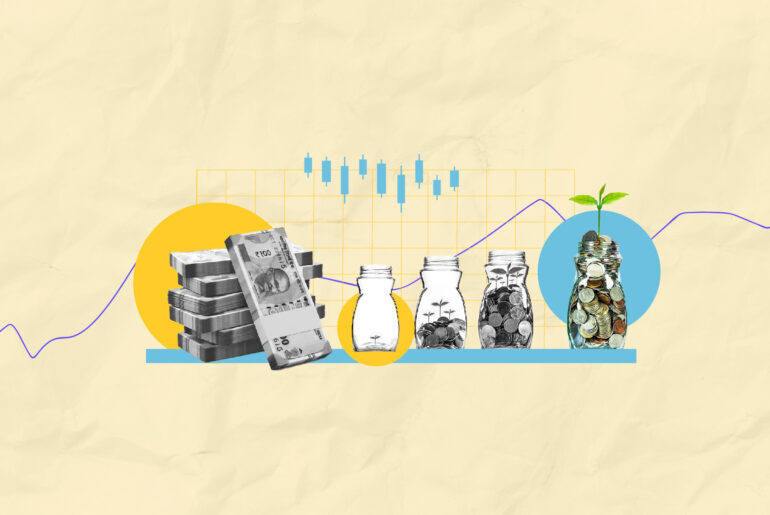Last Updated on Apr 6, 2021 by Manonmayi
Despite having the 4th largest coal reserves in the world, domestic production of coal in India has failed to meet the demand for a few years now. We were the world’s 3rd largest coal producer in 2018, with production at 68.88cr tonnes. Still, we had to spend Rs 1.71 lakh crore to import 23.5cr tonnes of coal in 2019.
That the coal production is falling short to meet demand is a long-standing issue and has various reasons. But here is where Coal India comes into the picture.
This articles covers:
Highlights of Coal India Limited
Shareholding and sale of the stake
Why is Coal India failing to meet production targets?
100% Foreign Direct Investment (FDI)
Is FDI the answer to the issues of the coal segment?
Privatising the coal mining sector
Is privatisation the solution?
Lifting the end-use restriction of coal
Is promulgating the ordinance the answer?
Reiteration of commercial coal mining in the Rs 20 lakh crore economic stimulus package
Where does Coal India stand now?
Table of Contents
Highlights of Coal India Limited (CIL)
Headquartered in Kolkata, Coal India is a state-owned coal mining and refining company that enjoys the ‘Maharatna’ status, which gives it autonomy and authority. Besides, it is the world’s largest coal-producing company.
CIL contributes to ~82% of the coal production in the country. It India Limited also owns the Coal India Africana Limitada (CIAL), its 100%-owned subsidiary in Mozambique.
History of Coal India
CIL was established as a public-sector company on 1st Nov 1975 to enhance the organizational and operational efficiency of the coal sector. At the time, Coal India Limited had 5 subsidiaries:
- Bharat Coking Coal Limited (BCCL)
- Eastern Coalfields Limited (ECL)
- Central Coalfields Limited (CCL)
- Western Coalfields Limited (WCL)
- Central Mine Planning & Design Institute Limited (CMPDIL)
Eventually, the following companies were added to Coal India:
- Northern Coalfields Limited (NCL)
- South-eastern Coalfields Limited (SECL)
- Mahanadi Coalfields Limited (MCL)
Joint ventures of Coal India
Coal India Limited has two joint ventures:
- International Coal Ventures Private Limited (ICVPL): Formed in 2009, ICVPL was formed to acquire coking coal properties outside the country. Coal India holds a stake of 2⁄7 of the venture’s paid-up capital
- CIL-NTPC Urja Pvt. Limited: Formed in Apr 2010 by NTPC and CIL, the joint venture company was to acquire coal blocks within the country and abroad. CIL owns 50% of the stake
Shareholding and sale of the stake
Up until 2010, Coal India Limited (CIL) was wholly owned by the government of India. However, the government has divested its stake multiple times via IPO and OFS. Here are the details:
- In Oct 2010, the government divested 10% of its stake in CIL by offering an initial public offering (IPO). By virtue of this, 63.16 crore shares were offloaded at Rs 245 apiece, the face value being Rs 10. Notably, the IPO was oversubscribed by 14.17 times
- Further, on 30th Jan 2015, the government sold an additional 10% of its stake in the coal mining company by way of an offer for sale (OFS). This time, each share was priced at Rs 358 and the sale bagged the government a whopping Rs 22,557.63 crore
- On 18th Nov 2015, the government sold another 10% of its stake in CIL
Listing of Coal India Limited
Coal India is listed on both Bombay Stock Exchange (BSE) and National Stock Exchange (NSE).
Why is Coal India failing to meet production targets?
As is known, Coal India Limited is responsible for ~80% of the domestic production of coal in the country. And by 2023-24, it is expected to produce a billion tonnes of coal. But Coal India has failed to meet its production targets for over a few years now and looking at the trend, whether the monopoliser can meet the production goal is doubtful. Well, last year, the miss was because of torrential and unpredicted rains that resulted in a 5.83% decline in consumption. Flooding in the company’s coal-bearing areas didn’t help either.
But on close examination, you would find that the environment for coal production in India is not very favourable. Here’s why.
- The responsibility to acquire land for coal mining lies with state governments and some of them are inefficient in the matter
- Getting legal clearances for land and coal mining is a complicated task
- Transportation is an issue; railways are an economic means but most mines fall away from the rail networks
- Coal India can’t extract top-quality coal as it uses outdated machinery that lacks the latest technology
- Mining has caused widespread deforestation, which has impacted the ecology around coal reserves
- Illegal coal mining still takes place in the country
Unfortunately, the not-so-conducive environment to produce coal would certainly not dilute demand. Picture this, thermal power plants and steel mills are some of the biggest consumers of coal in India. And with plans to add more of such units, demand for coal would naturally shoot. But with the current state of domestic coal mining in the country, meeting the demand doesn’t look easy.
To tackle such ongoing issues within the segment, the government passed certain reforms in the coal mining sector. Three of these are:
- 100% Foreign Direct Investment
- Privatisation
- Removal of end-use restrictions
Let’s speak about each of these reforms.
100% Foreign Direct Investment (FDI)
Last year, the government allowed foreign investment in the coal mining segment. The government loves foreign money and for the right reasons. After all, this would entice international players to invest in our country and fuel our production. This, in turn, would help meet the demand deficiency and reduce our import bills.
Is FDI the answer to the issues of the coal segment?
Nothing much came out of allowing this reform because of its downsides:
- The idea of competing with Coal India wasn’t encouraging enough
- Foreign players wouldn’t want to face complications in obtaining clearances from state governments to mine coal
- Foreign players’ use of the latest mining technology could adversely impact Coal India Ltd., which is already in turmoil
- 100% FDI in the segment would grant foreign players more control and power and, you know, with great power comes great risks of misuse
Privatising the coal mining sector
Whereas other countries are shifting to renewables for their energy needs, India still depends on coal, which is why the demand for it prevails. In fact, as per estimates, India would need crores of tonnes of coal in the upcoming years.
And as is known, CIL is India’s monopoliser of coal mining with a major responsibility of meeting the collective demand for coal in the country. But given Coal India unpreparedness and inefficiency, single-handedly producing enough coal to meet the demand is not possible.
Let us understand this. When CIL can’t meet production targets, the government is forced to import coal to the extent of the shortage. This will ultimately add to our import bills. Therefore, the government decided to privatise the segment to:
- Lighten CIL’s burden and reduce coal imports
- Create competition among players and ultimately benefit the consumer
- Access the latest technology via private players to mine coal
Is privatisation the solution?
Well, at least on the face of it, privatisation looks like an answer to the woes of the coal mining segment. But again, it may not be. Coal India Limited is a Maharatna company and the government is fond of it. Initially, the coal mining behemoth was granted mines that were easy and cheap to extract, which reduces Coal India’s expenses and translates into low prices.
On the other hand, private players would have to participate in auctions and bid for mines, which would be an expensive affair for them. As such, competing against Coal India could deter other players from entering into the business and only encourage the strong ones. Naturally, expecting a spurt in the supply of coal by allowing FDI and private players into the segment would most likely lead to disappointment.
Lifting the end-use of coal
Previously, the license to mine coal in India was only given to Coal India Ltd and a few other select companies. Such entities either used the mineral themselves—iron, steel, power, and coal washing sectors—or had experience in mining. By the way, mining for your own consumption and not for sale is called captive coal mining.
Recently, the government approved the promulgation of Mineral Laws (Amendment) Ordinance 2020 to amend the Mines and Minerals (Development and Regulation) Act 1957 and Coal Mines (Special Provisions) Act 2015. By virtue of this amendment:
- Restrictions on the end-use of coal will be lifted and the mineral can now be mined for commercial purposes
- Opens coal mining to eligible companies belonging to any sector of the economy
- Auctioning of mines that were cancelled due to end-use restrictions is possible
Is promulgating the ordinance the answer?
Lifting end-use restrictions on coal mining allows the mineral to be used for commercial purposes. This would hurt the natural resource and defeat the main motive of the amendment.
Reiteration of commercial coal mining in the Rs 20 lakh crore economic stimulus package
Recently, the centre announced an economic stimulus of a whopping Rs 20 lakh crore. One of the highlights of this package is to start commercial coal mining. In other words, the government renewed its efforts to allow private players to mine coal for commercial purposes. Ideally, this highlight is the reiteration of what was meant to happen before COVID-19. However, the announcement didn’t bode well with Coal India, whose stock plunged soon after. Notably, Coal India Limited has declined over 47% in the last year.
This is again directed at being self-reliant. That is, to ramp up coal production in the country and reduce our dependence on coal imports to meet the demand. As such, in her announcement of the 5th tranche of the Rs 20 lakh crore economic stimulus, FM Nirmala Sitharaman declared auctioning 50 coal blocks instantly for commercial mining. She also hinted at moving to a revenue sharing model from the regime of fixed rupee per tonnes.
Where does Coal India stand now?
The past reforms and recent push for them have certainly hit the stock of Coal India. But most importantly, it looks like Coal India’s monopoly is coming to an end. But opening doors for commercial mining is not Coal India’s only woe. The economic package has also offered a concession of Rs 5,000 crore to CIL’s customers, which is also a major blow to the entity. Besides, the slump in demand due to the uncertainty of economic activities resuming in full swing has also added to Coal India’s concerns.
Due to the coronavirus-triggered lockdown, demand for coal has reduced across industries. This translated to a fall of 26% in coal dispatches in the month of Apr. Also, thermal power generation declined by 28% in Apr due to which coal inventories at the power plants are increasing. And, with monsoon round the corner and inventory increasing, Coal India can meet demand and offer better prices, but the nationwide lockdown still poses a challenge to the coal sector behemoth.







